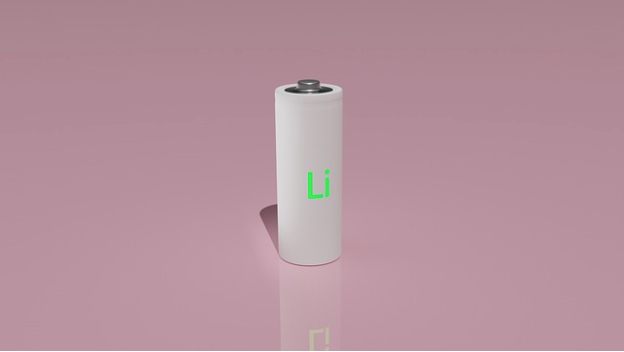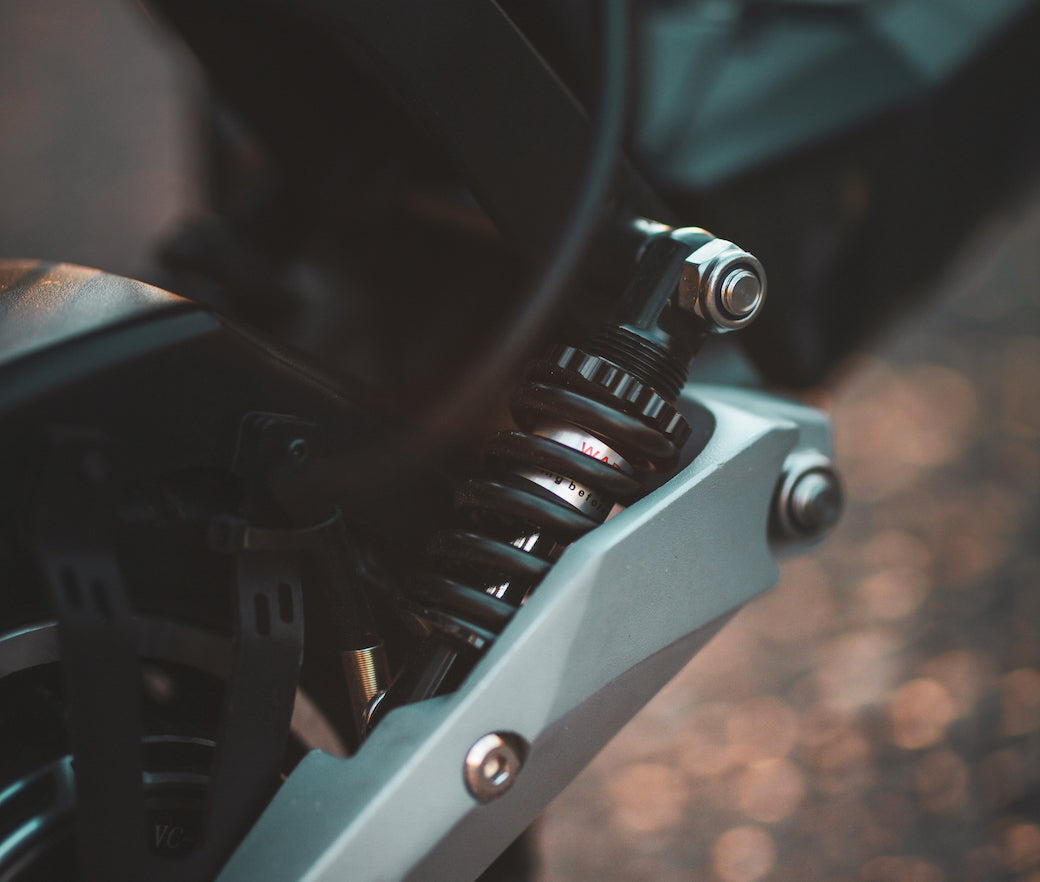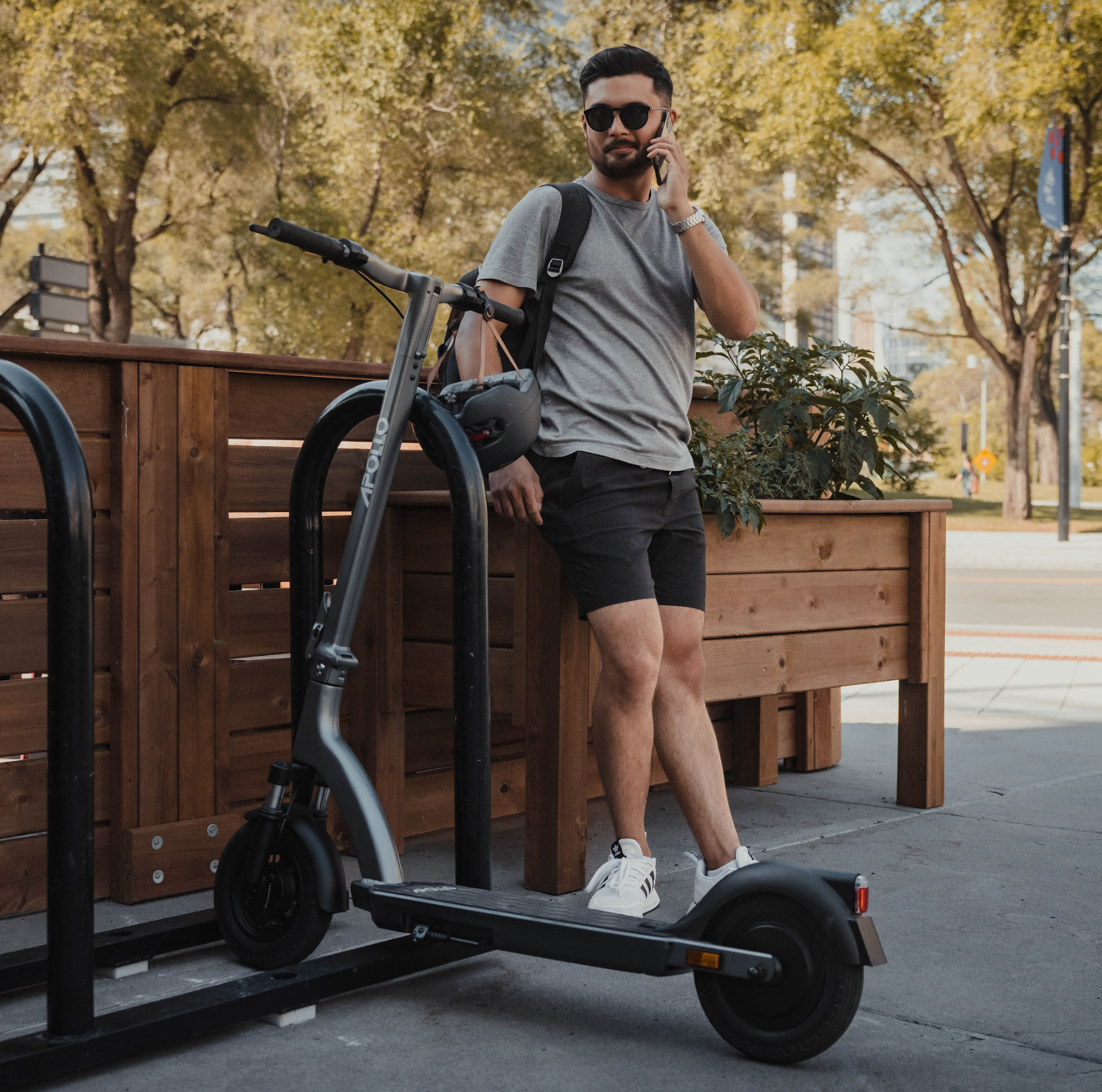Desafortunadamente, no existe una batería infinitamente recargable.
Al igual que las baterías de plomo ácido que todavía encontramos en linternas y controles remotos, las baterías de iones de litio en los scooters eléctricos eventualmente se desgastarán, incluso si es necesario mucho más.
Las baterías de litio comienzan a perder capacidad después de unos cientos de ciclos de carga, luego su eficiencia disminuye gradualmente hasta que la batería comienza a perder su carga por completo. Generalmente, esto no comienza a suceder hasta después de haber recorrido entre 3000 y 10 000 millas en un scooter eléctrico.
Lo ideal es que la vida útil promedio de la batería de un scooter eléctrico corresponda a la vida útil promedio de un scooter eléctrico. ¿Y cuánto duran los scooters eléctricos ? Bueno, eso puede ser de dos a cuatro años o más, dependiendo de factores como el buen mantenimiento, la frecuencia de uso y las prácticas adecuadas de carga y almacenamiento de la batería.
Es posible que sea necesario reemplazar las baterías de menor calidad antes que otras piezas importantes, pero en nuestros muchos años de experiencia con scooters eléctricos, hemos descubierto que cuando un scooter falla, el problema rara vez está relacionado con la carga de la batería o con la batería. capacidad.
Dicho esto, es bastante fácil encontrar una batería de iones de litio de repuesto para scooters eléctricos de la mayoría de los fabricantes, y la mayoría de las baterías se pueden instalar con conocimientos técnicos mínimos.
Conozca el tipo y la capacidad de la batería de su scooter
Qué buscar en una batería?
Especificaciones de la batería
Cuando compre un scooter nuevo, querrá observar especificaciones como el tipo, la capacidad y la calidad de la batería. Las baterías de mayor voltaje son excelentes: se traducen en más potencia disponible para los motores de los scooters eléctricos (razón por la cual los scooters de alto rendimiento como el
Las especificaciones de la batería solo cuentan una parte de la historia del avance de la batería de iones de litio para scooters eléctricos. Pero cuentan una parte importante. Conocer y comprender especificaciones como voltaje, amperios hora y vatios hora (una medida de voltios x amperios hora) puede ayudarle a calcular la duración de la batería y hacer sus propias estimaciones de alcance.

Las baterías de scooter eléctrico son en realidad paquetes de baterías rectangulares formados por celdas más pequeñas conectadas entre sí en serie o paralelo. El tamaño dado de la batería es un número que describe el tamaño de su diámetro y la longitud de sus celdas. La mayoría de los scooters eléctricos para adultos utilizan 18650 celdas (18 mm x 65 mm), que tienen una forma similar pero un poco más grandes que las baterías AA.
Las células 18650 tienen muchas ventajas, incluida una larga vida útil. También tienen algunas desventajas, incluida una alta sensibilidad a la temperatura. Más recientemente, algunos scooters eléctricos premium como el próximamente en 2023
Calidad de la batería
Puede que no sea una sorpresa saber que las baterías de marca duran más. Las marcas de scooters eléctricos de alta calidad tienden a obtener baterías de scooters eléctricos de calidad de fabricantes de productos electrónicos conocidos como Samsung y LG.
Pero muchas celdas genéricas se fabrican en las mismas fábricas que las de marca y pueden tener casi la misma confiabilidad. Un fabricante confiable en general obtendrá piezas de calidad incluso si no están estampadas con nombres conocidos.
Cómo extender la duración de la batería del scooter eléctrico?
La duración de la batería del scooter eléctrico también depende en gran medida de las prácticas responsables de carga y almacenamiento y del grado de uso. Puede ayudar a prolongar la vida útil de la batería cuidándola con los siguientes consejos que recomendamos a continuación, utilizando hábitos de carga que garanticen que obtenga la máxima capacidad de su batería antes de que comience a agotarse.
Aprender a cuidar su scooter eléctrico, y su parte más importante, la batería, es parte de aprender a ser un mejor conductor de scooter eléctrico en general.
¿Qué son los ciclos de carga y cuántos obtengo?
Nuevamente, la vida útil de la batería se cuenta en ciclos de carga, generalmente indicados para una batería de scooter eléctrico entre 300 y 500 ciclos completos de carga/descarga. Estos números corresponden aproximadamente a alrededor de 3000 a 10 000 millas de desgaste.
SIN EMBARGO, es importante tener en cuenta que la batería no se agota simplemente cuando alcanza su número de ciclos de carga completos. Poco a poco empieza a perder capacidad. Después de unos 500 ciclos de carga, la mayoría de las baterías de scooters eléctricos perderán alrededor del 20% de su capacidad total.
Las baterías de scooter pueden perder alrededor del 30%-40% de su capacidad total después de 1000-2000 ciclos hasta que la batería no logra mantener suficiente carga para alimentar el scooter y está efectivamente muerta. Generalmente, querrás encontrar un reemplazo de batería antes de este punto, pero es raro, como hemos señalado, que una batería falle antes que otras piezas importantes de un scooter.
Cuidado de la batería de scooter eléctrico: mejores prácticas
Las baterías, al igual que los cuerpos humanos, son sistemas de almacenamiento e intercambio de energía. Y al igual que los humanos, se estresan cuando los sacan de su zona de confort.
Para una batería de scooter eléctrico, la zona de confort tiende a estar entre el 20% y el 80% de carga, una especie de rango de ricitos de oro que evita la posibilidad de sobrecarga o descarga total.
Tanto la sobrecarga como la descarga total son eventos estresantes para la batería y pueden acortar su vida útil.
Está bien cargar la batería al 100%, especialmente si vas a realizar un viaje largo, pero asegúrate de desenchufarla tan pronto como haya alcanzado su capacidad máxima y no dejes que se sobrecargue.
Cargar sin sobrecargar
Cómo evitar sobrecargas
Muchos scooters eléctricos utilizan indicadores de batería que muestran el estado de carga en un porcentaje. Esto hace que sea especialmente fácil saber cuándo estás al 100 % de la carga completa y, una vez que hayas llegado a ese punto, debes desconectar inmediatamente el scooter del cargador.
Incluso si su scooter eléctrico no muestra la duración de la batería en porcentajes, aún puede desconectarlo antes de que se sobrecargue. Una vez que el scooter haya alcanzado el número total de horas de carga recomendadas, desenchúfelo. El indicador de batería debe estar completamente en verde.
Si desea mantener la batería en ese punto óptimo del 80 %, desconéctela tan pronto como la luz indicadora se ponga verde. (Una luz verde no significa que esté completamente cargada de inmediato).
Usar estas prácticas de carga significa que debes evitar cargar tu scooter eléctrico durante la noche mientras duermes o dejarlo en el cargador mientras estás en el trabajo. Estos métodos de carga son convenientes y tratamos a muchos de nuestros dispositivos recargables de esta manera, para bien o para mal, pero sobrecargar las baterías de los scooters eléctricos no solo es ineficiente sino potencialmente peligrosa.
Tampoco dejes que la batería se descargue por completo
Cuando una batería de iones de litio se descarga completamente, las celdas envejecen prematuramente.
En especial, querrás evitar una descarga total si guardas tu scooter eléctrico durante largos períodos de tiempo o no lo utilizas con frecuencia. Intente mantener su scooter alrededor de la marca del 50 % de carga y revíselo periódicamente, completando hasta el 50 % si es necesario.
Almacenar un scooter eléctrico que no utiliza todos los días en el rango del 50% ayudará a prevenir el descontrol térmico y también evitará que la batería se descargue por completo, un estado de agotamiento que acorta el número de ciclos de carga disponibles para la batería y, por lo tanto, acorta su vida útil.
Nunca dejes que la batería se caliente o enfríe demasiado
Además de la carga y descarga, las temperaturas extremas también pueden afectar la duración y el rendimiento de la batería. El calor acelera el envejecimiento de las baterías de iones de litio, mientras que las temperaturas frías pueden reducir la capacidad de la batería.
La mayoría de las baterías de scooters eléctricos están diseñadas para funcionar en un amplio rango de temperaturas, pero mantener su scooter en ambientes demasiado cálidos o demasiado fríos reducirá su vida útil.
Lo ideal es guardar el scooter y la batería en un lugar fresco y seco con temperaturas que oscilen entre 32 °F y 77 °F. Nunca guardes tu scooter bajo la luz solar directa y nunca lo dejes dentro de un auto cerrado con llave en un día caluroso de verano.
Si conduce su scooter en temperaturas muy altas o bajas, siempre deje que se enfríe o se caliente a temperatura ambiente antes de enchufarlo para cargarlo.
Uso de la batería
Hábitos de conducción de scooters
También deberás considerar tus necesidades de conducción. No hace falta decir que si conduces un scooter eléctrico todos los días, puedes esperar que la batería se desgaste más que si solo lo sacas los fines de semana y días festivos.
Si desea maximizar la duración de la batería, considere hacer menos viajes y recorrer distancias más largas. Cuidar bien la batería de su scooter eléctrico y controlar su uso contribuirá en gran medida a prolongar su longevidad. Prestar atención a los ciclos de carga, los hábitos adecuados de carga y descarga, la temperatura y tus hábitos de conducción te ayudarán a aprovechar al máximo tu batería y maximizar su vida útil.
Y si utiliza un scooter eléctrico como su principal vehículo de transporte, lo mejor para usted es comprar un scooter de alta calidad de un fabricante de confianza que no sea barato en la parte más importante del scooter: el batería.
La importancia del mantenimiento y las actualizaciones de firmware
Realizar todo el mantenimiento básico de su scooter eléctrico prolongará la vida útil de la batería al garantizar que el vehículo funcione con la mayor eficiencia posible y, por lo tanto, consuma menos energía mientras lo usa para ir más lejos y más rápido.
El mantenimiento adecuado incluye asegurarse de que su scooter eléctrico tenga las últimas actualizaciones de firmware. Los scooters eléctricos que integran IoT, como los fabricados por
Scooters con la batería de mayor duración deApollo
Los avances en tecnología de baterías, software, controladores y sistemas de administración de baterías han permitido a fabricantes premium como
https://www.youtube.com/watch?v=lJGQdjKOd7Q
El Explore 2023, otro nombre que
De hecho,

En el aspecto de alto rendimiento, el Ghost 2022 de
Apollo Scooters con el rango más largo
-
Apollo Aéreo: 31 millas -
Apollo City 2022: 30 millas -
Apollo City Pro: 38 millas -
Apollo Fantasma 2022: 39 millas -
Apollo Phantom V2: 40 millas
Estos son scooters eléctricos fabricados con algunas de las piezas de la más alta calidad, incluidas las celdas de la batería, que durarán toda la vida útil del scooter, y tal vez más. Sin embargo, la pregunta inevitable persiste. ¿Qué sucede si necesita una batería de repuesto?
Apollo Reemplazos de batería
Preguntas frecuentes
¿Qué pasa si pierdo mi cargador? ¿Puedo comprar uno en Amazon?
No, nunca debes usar un cargador no original. Todos los fabricantes de scooters eléctricos de buena reputación tienen cargadores de repuesto. Si pierde su cargador de batería
¿Cuánto tiempo debo esperar que dure la batería de mi scooter?
Eso depende de cómo uses y mantengas tu scooter. En términos generales, una batería de iones de litio de alta calidad durará hasta 1000 ciclos de carga hasta que deje de retener la carga. Sin embargo, el cuidado adecuado es clave para garantizar una larga vida útil de la batería.
¿Por qué no puedo volver a cargar durante la noche?
La sobrecarga de una batería de iones de litio genera una tensión adicional en las celdas, lo que puede provocar menos ciclos de carga o incluso un incendio causado por la acumulación interna de calor llamada fuga térmica.



















